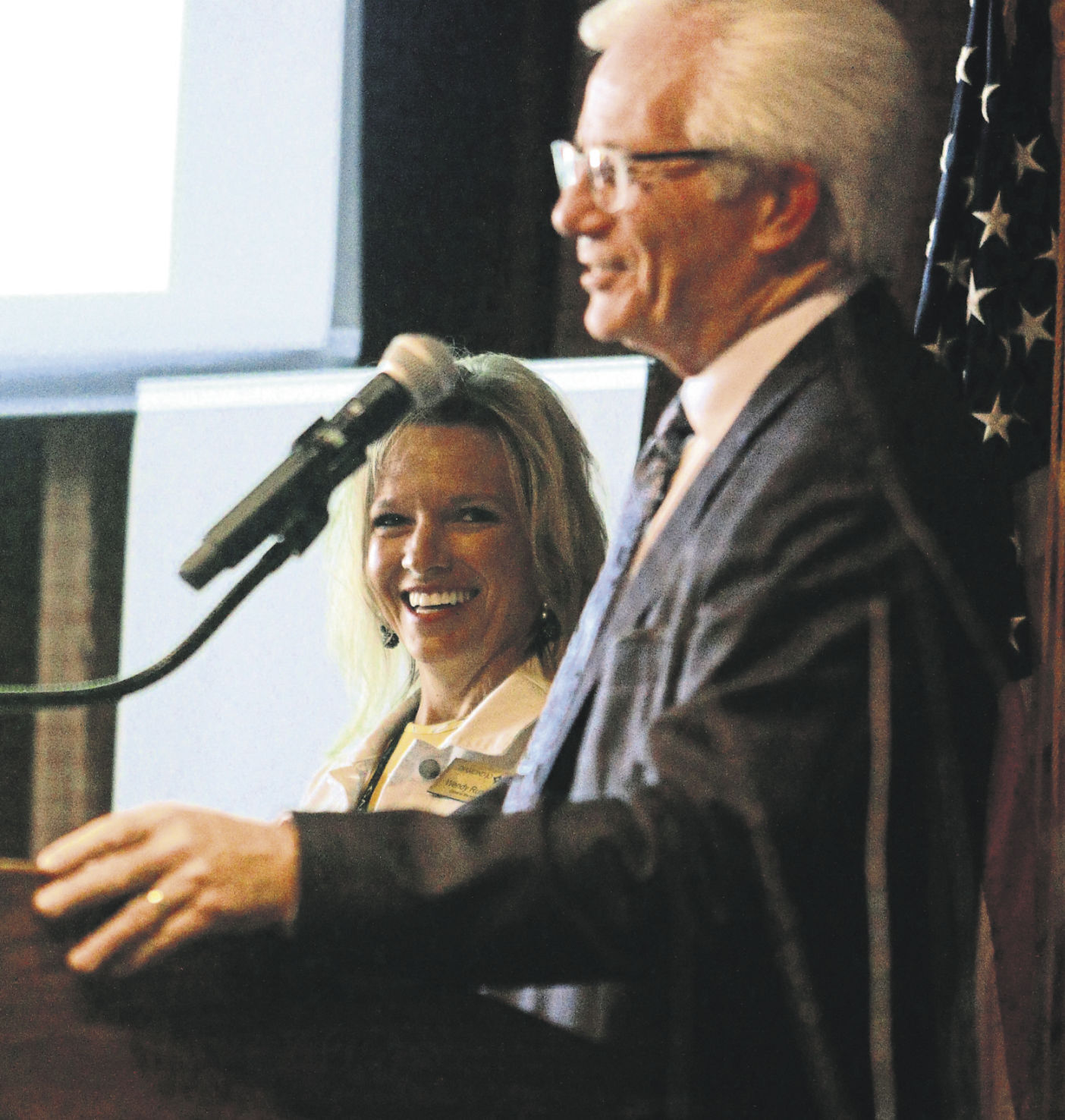Despite a challenging year, Dubuque’s economic recovery from the COVID-19 pandemic is strong, according to local leaders.
The pandemic’s effects on the regional economy took center stage at the Greater Dubuque Development Corp. annual meeting on Thursday night at Diamond Jo Casino in Dubuque.
“There is no individual, business, community or region left unscathed by what we have endured together,” said Rick Dickinson, executive director of GDDC.
He cited support from public and private sectors, as well as an emphasis on initiatives such as expanding broadband access, as critical factors in the region’s strong recovery.
Dickinson noted that the Dubuque metropolitan area’s current workforce growth is nearly double that of every other metropolitan area in the state, with 1.9% growth from April to May.
Thursday’s meeting was the first — and only — time in her tenure that outgoing GDDC Board of Directors Chairwoman Wendy Runde led a face-to-face event.
“Tonight, I get to make up for a year of virtual meetings,” she said, adding with a smile, “There aren’t any mute buttons, and there’s no turning the camera off.”
Runde, vice president and general manager of Diamond Jo, also spoke seriously of the difficulties brought on by the pandemic. She praised the GDDC board and staff for their work in expanding existing businesses and welcoming new employers such as Duluth Trading Co. and Crown Cork & Seal.
“In a time when ‘getting through it’ was considered success … priorities did not get sidetracked at GDDC,” she said.
Runde also noted that this year, GDDC achieved two of the four broad goals in its five-year campaign “Greater Dubuque 2022,” which concludes next June.
According to the GDDC annual report, Dubuque County’s median household income surpassed the goal of $60,000 and is at $63,130. Construction spending also exceeded the group’s goal of $800 million, reaching $813,975,796.
However, labor force and population are still below GDDC goals for 2022. The report lists the county’s labor force at 59,800 and population at 97,590, short of the group’s goals of 64,000 and 100,000, respectively.
Prior to Thursday’s meeting, Dickinson acknowledged the “real challenges” the county faces in meeting these goals, in part due to the effects of the pandemic.
However, he called the area’s workforce growth a positive sign.
“That’s not to say we’re over (the pandemic). We’re not,” he said. “But we’re outperforming our competition, and despite a real challenge in recruiting talent, I think the resources are here in our community, and our community’s aggressive.”
Incoming board Chairman Tim Hodge, CEO of Hodge Co., listed several of the group’s goals for the next year. These include building community relations based in diversity, equity and inclusion and helping employers retain and recruit talent.
“These … are what we need to move the needle on,” he said.



